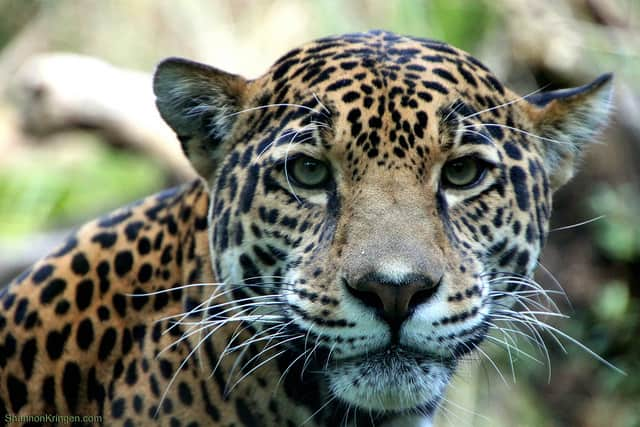Game and Fish Confirms Report of Jaguar in Southern Arizona
OutdoorHub 11.22.11

Tucson, Ariz. – The Arizona Game and Fish Department over the weekend was able to confirm a hunter’s report of a jaguar southeast of Tucson and collect hair samples from the area for possible DNA testing.
Game and Fish categorizes the report as a Class I-10, meaning the report is considered verifiable or highly probable, and visual or physical evidence is provided and confirmed.
The report was initially received on Saturday, Nov. 19 at 9 a.m. from an experienced hunter using dogs to hunt mountain lions. The dogs pursued an animal the hunter ultimately deemed was a jaguar. The animal was treed approximately 15 feet up in a mesquite tree, and the hunter was able to obtain photographs and video. After photographing the jaguar, the hunter quickly left the area with his dogs and observed from a distant point. The jaguar remained treed for approximately 15 minutes and then headed south.
Based on the images, biologists believe the jaguar is an adult male that appeared in good, healthy condition and weighed approximately 200 pounds.
Biologists who have viewed the photos consider the images to be of excellent quality with considerable detail. In the future, the department  hopes to compare the photos and video to images of other jaguars photographed throughout Arizona in the past. They will try to use comparisons between a jaguar’s unique spots, or “rosettes,” to determine if the animal has been identified previously.
hopes to compare the photos and video to images of other jaguars photographed throughout Arizona in the past. They will try to use comparisons between a jaguar’s unique spots, or “rosettes,” to determine if the animal has been identified previously.
Four of the last five confirmed jaguar sightings in Arizona have been reported by hunters, who all took responsible action to document the animal, report it to Game and Fish, and leave the area once the animal was identified as a jaguar. These hunters have provided biologists with critical information that may not otherwise be known, information that will help increase the understanding of the species’ existence in the borderland area.
The species has been protected outside of the United States under the Endangered Species Act since 1973. That protection was extended to jaguars within the U.S. in 1997, the year after their presence in the Arizona and New Mexico borderlands was confirmed.
Jaguars once ranged from southern South America through Central America and Mexico and into the southern United States. It is believed that southern Arizona is the most northern part of the range for a population of jaguars living in Sonora, Mexico. As noted by the U.S. Fish and Wildlife Service in a 2006 report, it appears there is “regular intermittent use of the borderlands area by wide-ranging males.” The report also observes that “no indication of the presence of females or cubs, indicates that physical and biological features in the U.S. may allow individual transients to survive, at least temporarily, but do not support a breeding population.”
Jaguars are the only cat in North America that roar. They prey on a variety of mammals, fish, birds and reptiles. Females breed year-round and have litters of one to four cubs that stay with their mother for nearly two years.

